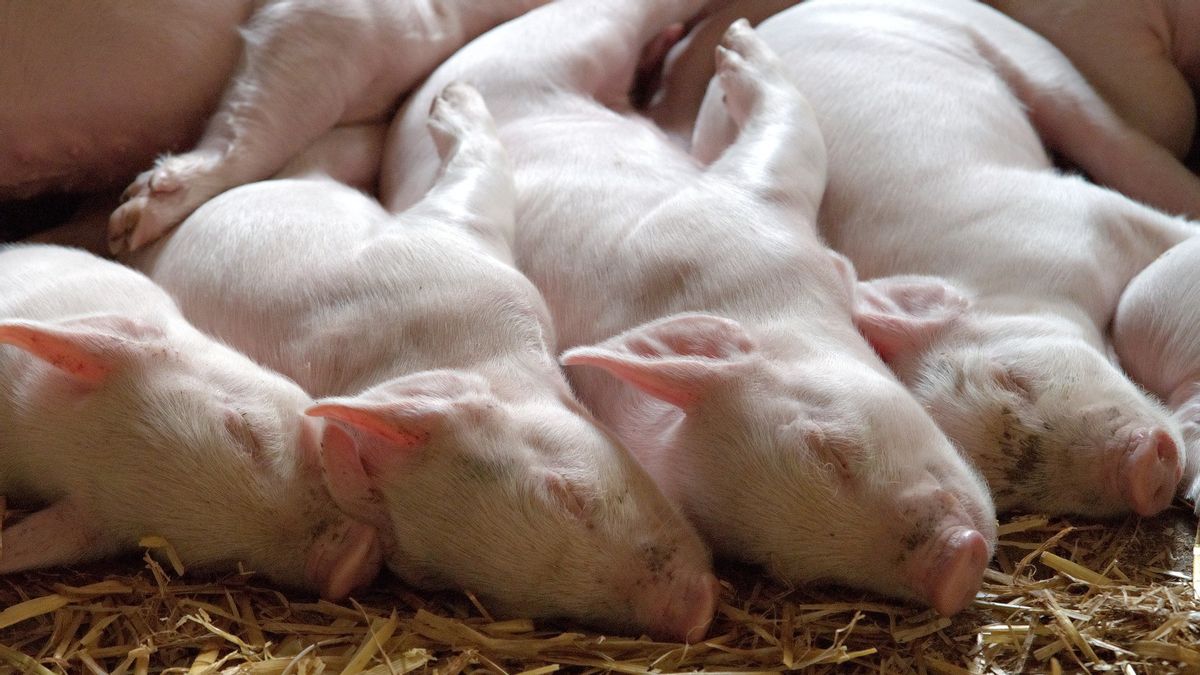JAKARTA - In the midst of the onset of the COVID-19 pandemic where it is not yet known exactly when it will end, health experts are wary of the emergence of the Nipah virus (NiV) which is predicted to become a new pandemic.
Launching the official WHO website, it was explained that the Nipah virus first occurred in Malaysia in 1999. Those who were first infected with this virus were a group of breeders and this outbreak infected nearly 300 people and more than 100 people died.
During the first outbreak that occurred in Malaysia and spread to Singapore, most human Nipah virus infections were caused by direct contact with sick pigs.
It did not stop there, the transmission of this virus continued in Bangladesh and India in 2001. This transmission started from fruit or fruit preparations contaminated with urine or saliva from fruit bats and then eaten by humans. These animals are possible sources of viral infection.
In the above incident, human-to-human transmission of the Nipah virus was reported between the family and the infected patient. This virus can be transmitted through droplets or saliva splashes.
The cause of the Nipah virus is considered deadlyIn infected people, this virus can cause a wide range of illnesses from asymptomatic infections to acute respiratory illnesses and fatal inflammation of the brain or encephalis.
People infected with the Nipah virus initially experience symptoms including fever, headache, muscle aches, vomiting and sore throat. These symptoms can be followed by dizziness, drowsiness, altered consciousness, and neurological signs that indicate acute encephalitis.
Some people can also experience atypical pneumonia and severe breathing problems, including acute respiratory distress. In severe cases, seizures can lead to coma within 24-48 hours.
The incubation period, which is the interval from infection to the onset of symptoms, ranges from 4 to 14 days. At the longest, there are examples of cases of Nipah virus infection which have an incubation period of 45 days.
Not only that, this virus is becoming increasingly dangerous because there is no specific drug or vaccine to treat it either in humans or animals.
In past outbreaks, the primary care for humans was supportive care.
WHO has identified the Nipah virus as a priority disease in the WHO research and development blue print. In March 2020, the Coalition for Epidemic Preparation (CEPI) disbursed a budget of US $ 25 million for research and clinical trials of the human Nipah virus vaccine.
Is considered to be a new pandemicAn epidemic expert from Australia's Griffith University, Dicky Budiman, assessed that the Nipah virus deserves the attention of world health experts. The reason is that this virus is considered to have the potential to become the next pandemic.
"Why? There are at least three things that I always say, that one disease is a potential pandemic because first it is a new virus for humans," he said when contacted by VOI, Wednesday, January 27.
According to him, because this virus always infects animals, humans do not have the immune system to fight it. If this virus then infects one human and eventually transmission occurs, then what will happen is a pandemic that is feared could emerge.
"This means that the potential to become a pandemic is greater. In fact, it is even greater than the COVID-19. Because the death rate can be up to 75 percent," he explained.
The second reason is that the virus is contagious and so can infect people in certain areas.
"Well, the third is because this virus causes illness and death. Mainly the death rate, this can be very high, 40 to 75 percent depending on the health facilities in that place. Not to mention the long incubation period," he explained.
"So this is what worries us because there is no adequate drug for this Nipah virus, although it has been detected for a long time, there is no medicine that can handle this disease and make the situation worse," he added.
Steps taken to prevent the spread of this virusThe government through the Ministry of Health has tried to anticipate the emergence of this virus. This is done by preventing the illegal trade in pigs from infected areas.
In addition, the government has also implemented procedures to tighten the export and import of pork commodities and products between Indonesia and Malaysia.
"According to the Indonesian Embassy in Malaysia, the Indonesian government only accepts shipments that are accompanied by a health certificate issued by the Malaysian Animal Service Department to certify that the exported pigs are healthy," said the Ministry of Health's Director of Vector Infectious and Zoonotic Disease Prevention and Control Didik Budijanto.
He explained, currently the incidence of Nipah virus infection has never been reported in Indonesia. Even so, the government remains alert to the potential for virus transmission from pigs in Malaysia through fruit-eating bats.
Moreover, several research results show that there are fruit bats that move regularly from Peninsular Malaysia to Sumatra Island, especially North Sumatra which is adjacent to Malaysia.
"So there is a possibility of spreading the nipah virus through bats or through the illegal pig trade from Malaysia to Indonesia," said Didik.
"Indonesia must always be aware of the potential for nipah virus transmission from pigs in Malaysia through fruit-eating bats," he concluded.
The English, Chinese, Japanese, Arabic, and French versions are automatically generated by the AI. So there may still be inaccuracies in translating, please always see Indonesian as our main language. (system supported by DigitalSiber.id)













